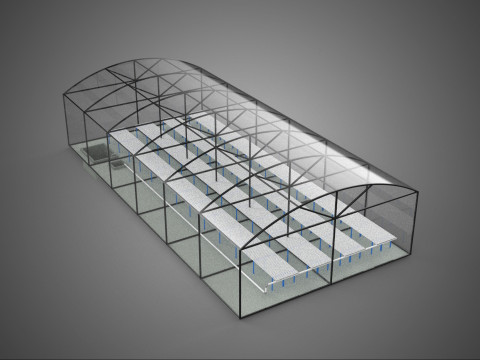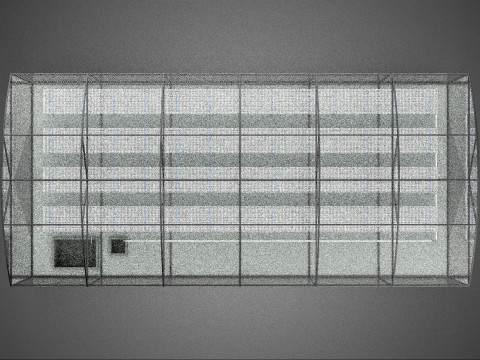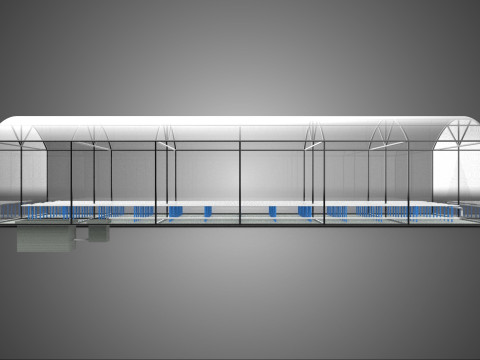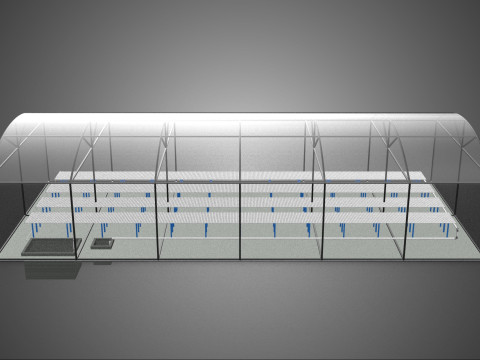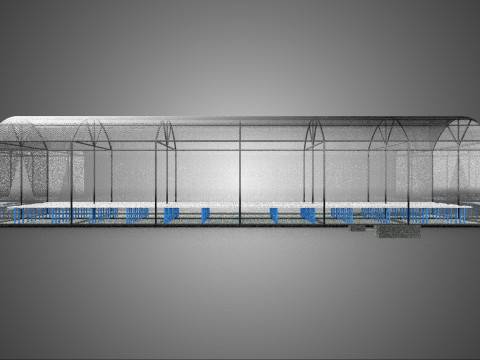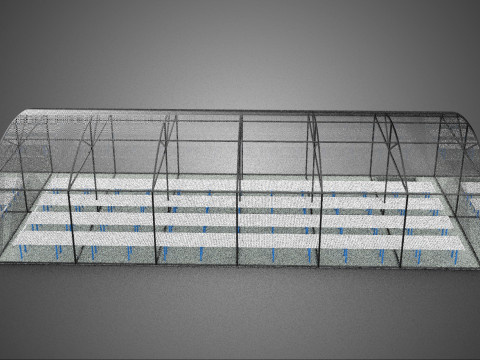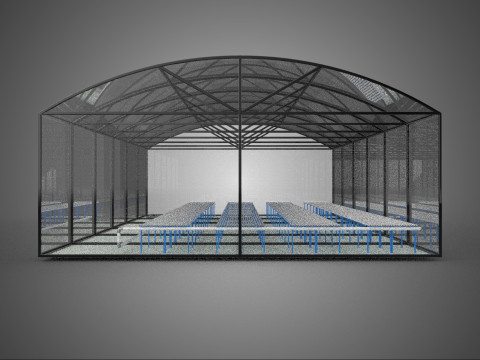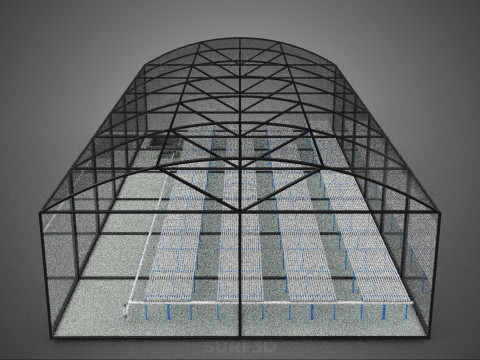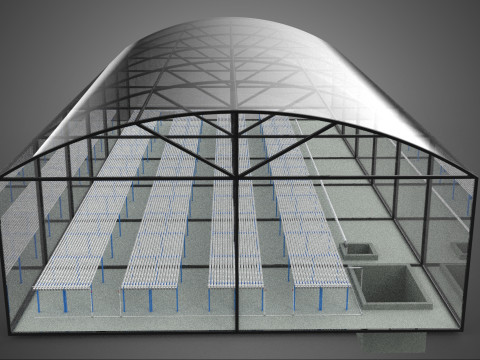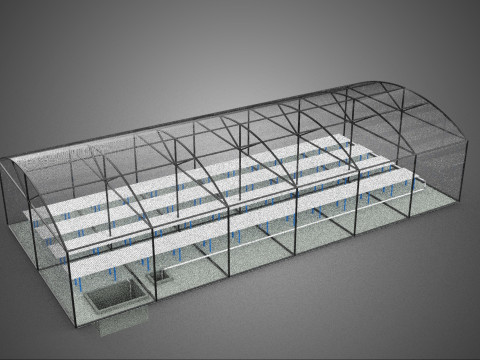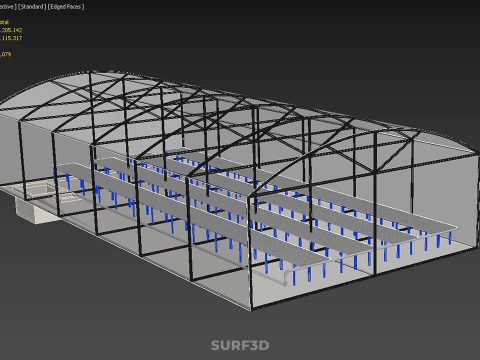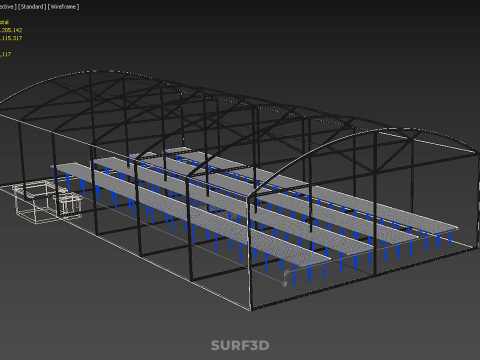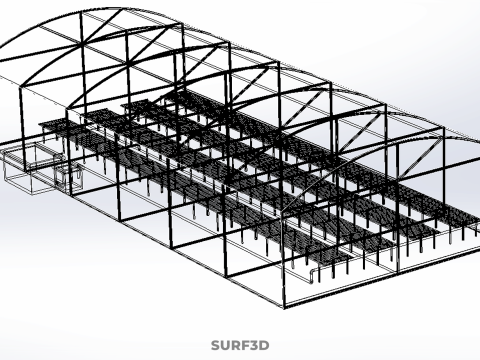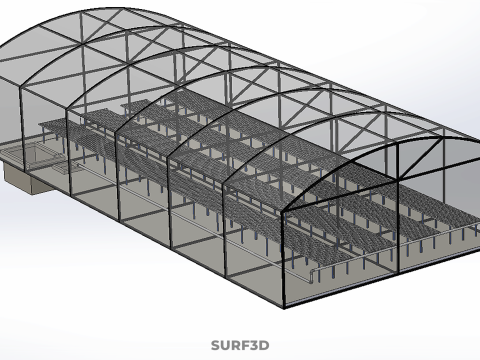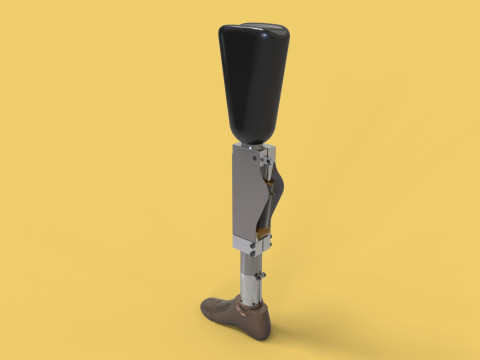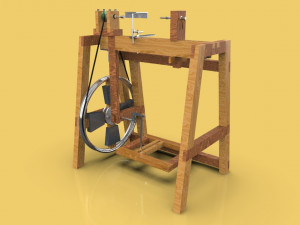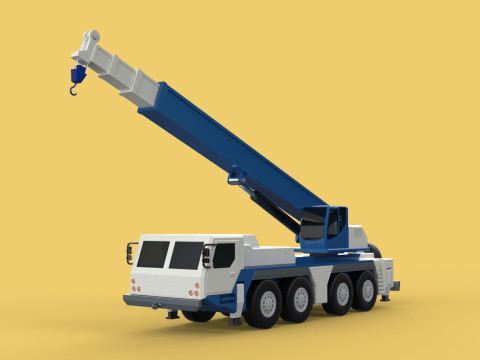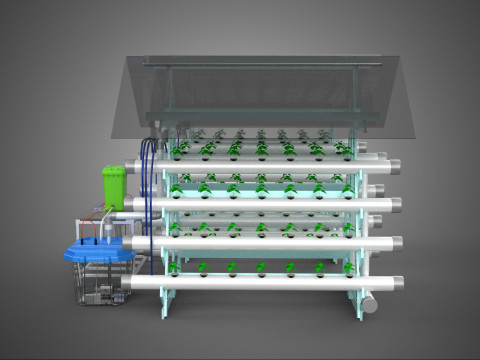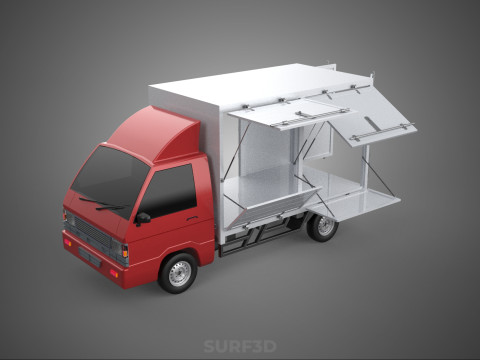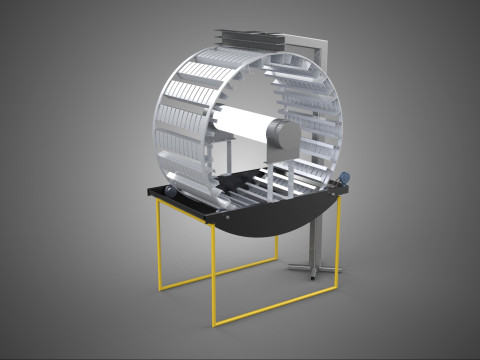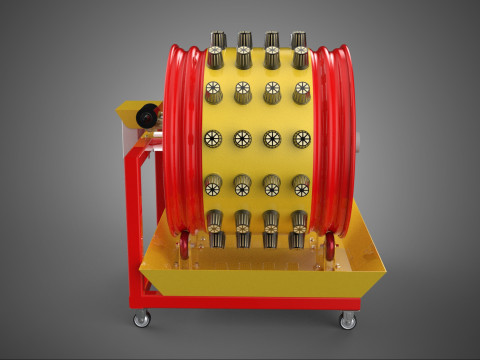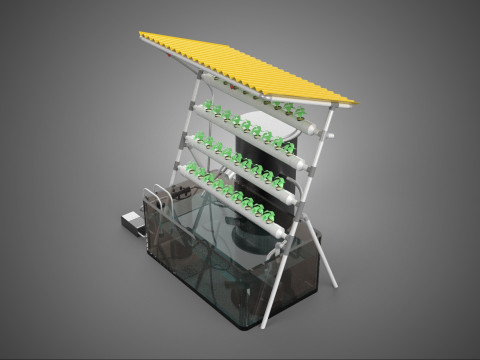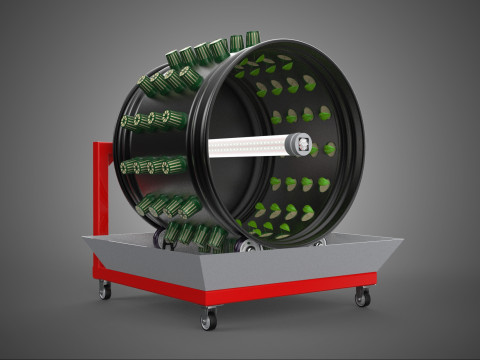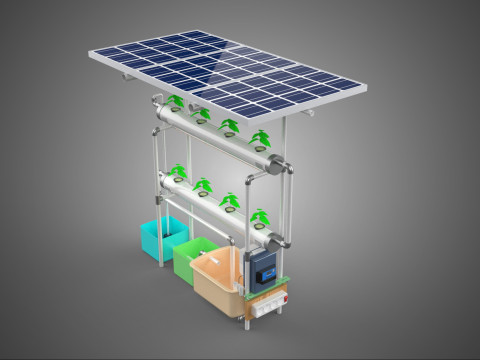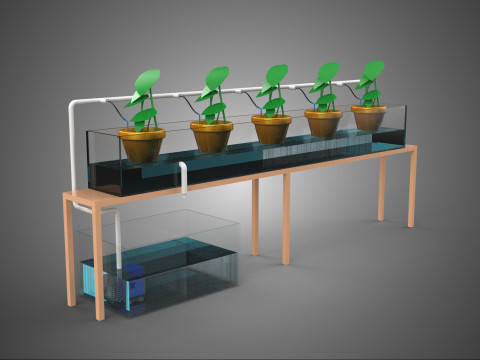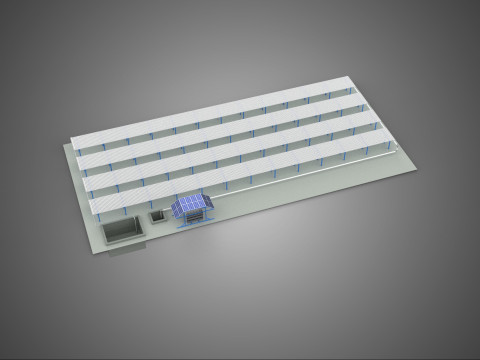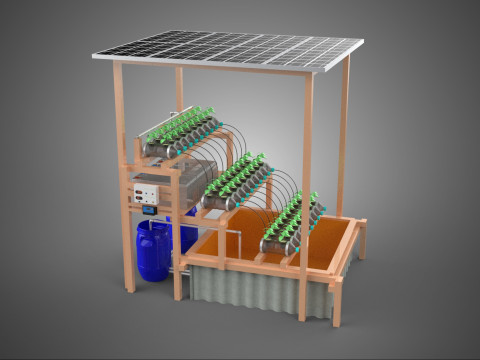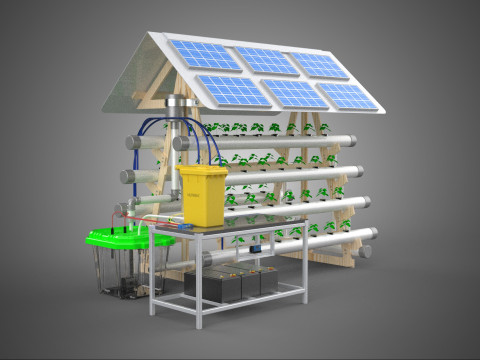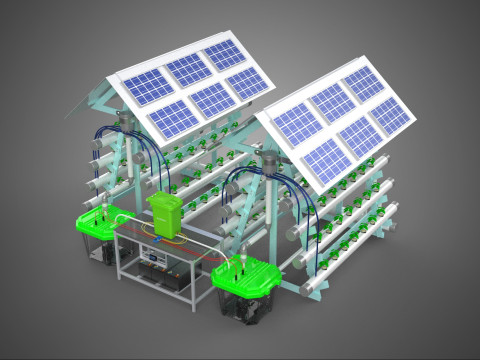GREENHOUSE PLANT FARM CULTIVATION AEROPONIC HYDROPONIC GARDEN 3D Model
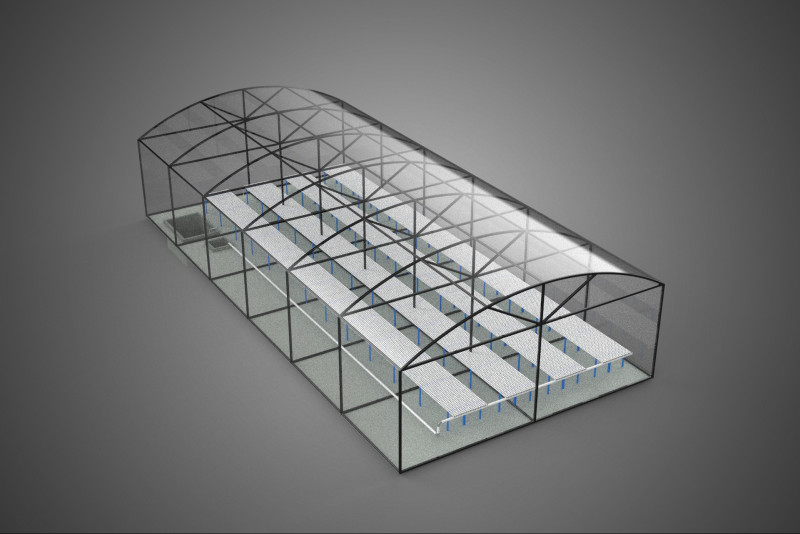
- Hazır formatlar: Rhinoceros (.3dm) 165.53 MB3D Studio (.3ds) 8.10 MBBlender3D (.blend) 26.73 MBCollada (.dae) 55.47 MBAutodesk AutoCAD (.dwg) 32.43 MBAutodesk FBX (.fbx) 58.59 MBGLB (.glb / .gltf) 10.48 MBIGES (.iges) 22.17 MBWavefront OBJ (.obj) 28.36 MBSketchUp (.skp) 29.30 MBSTEP (.step) 45.10 MBStereolithography (.stl) 22.35 MBAutodesk 3DS MAX (.max) 142.81 MBACIS(.sat) 115.53 MB
- Poligonlar:3205142
- Noktalar:3115317
- Animasyon:No
- Dokulu:No
- Rigged:No
- Malzemeler:
- Low-poly:No
- Koleksiyon:No
- UVW mapping:No
- Kullanılan Eklentiler:No
- Baskıya Hazır:No
- 3D Tarama:No
- Yetişkin(+18) içerik:No
- PBR:No
- AI Eğitim:No
- Geometri:Poly NURBS
- Unwrapped UVs:Unknown
- Görüntülemeler:30
- Tarih: 2025-10-14
- Ürün ID:605184
High-quality 3D assets at affordable prices — trusted by designers, engineers, and creators worldwide. Made with care to be versatile, accessible, and ready for your pipeline.
Included File Formats
This model is provided in 14 widely supported formats, ensuring maximum compatibility:
• - FBX (.fbx) – Standard format for most 3D software and pipelines
• - OBJ + MTL (.obj, .mtl) – Wavefront format, widely used and compatible
• - STL (.stl) – Exported mesh geometry; may be suitable for 3D printing with adjustments
• - STEP (.step, .stp) – CAD format using NURBS surfaces
• - IGES (.iges, .igs) – Common format for CAD/CAM and engineering workflows (NURBS)
• - SAT (.sat) – ACIS solid model format (NURBS)
• - DAE (.dae) – Collada format for 3D applications and animations
• - glTF (.glb) – Modern, lightweight format for web, AR, and real-time engines
• - 3DS (.3ds) – Legacy format with broad software support
• - 3ds Max (.max) – Provided for 3ds Max users
• - Blender (.blend) – Provided for Blender users
• - SketchUp (.skp) – Compatible with all SketchUp versions
• - AutoCAD (.dwg) – Suitable for technical and architectural workflows
• - Rhino (.3dm) – Provided for Rhino users
Model Info
• - All files are checked and ****ed for integrity and correct content
• - Geometry uses real-world scale; model resolution varies depending on the product (high or low poly)
• • - Scene setup and mesh structure may vary depending on model complexity
• - Rendered using Luxion KeyShot
• - Affordable price with professional detailing
Buy with confidence. Quality and compatibility guaranteed.
If you have any questions about the file formats, feel free to send us a message — we're happy to assist you!
Sincerely,
SURF3D
Trusted source for professional and affordable 3D models.
More Information About 3D Model :
A "Greenhouse Plant Farm Cultivation Aeroponic Hydroponic Garden" describes a highly sophisticated and integrated system within the realm of Controlled Environment Agriculture (CEA). This paradigm combines the protective and climate-optimizing attributes of a greenhouse structure with advanced soilless cultivation methodologies, namely hydroponics and aeroponics, to achieve efficient, sustainable, and high-yield plant production on a commercial or farm scale.
**Greenhouse Component:**
The greenhouse serves as the foundational structure, providing a meticulously controlled macro-environment for plant growth. Constructed from transparent or translucent materials such as glass, polycarbonate, or specialized plastic films, it facilitates the optimized transmission of natural sunlight while offering comprehensive protection from adverse weather conditions, pests, and diseases. Modern greenhouses integrate sophisticated climate control systems, including automated ventilation, heating, cooling, and shading mechanisms. Supplemental lighting (e.g., Light Emitting Diodes - LEDs) is often employed to extend photoperiods or compensate for insufficient natural light. Carbon dioxide (CO2) enrichment systems are also commonly utilized to enhance photosynthetic rates, thereby accelerating plant growth and increasing yields. The precisely controlled environment minimizes environmental variability, allo***g for consistent production cycles irrespective of external climatic fluctuations.
**Hydroponic Cultivation:**
Hydroponics is a soilless cultivation technique where plants are grown with their roots directly immersed in, or consistently supplied with, a mineral nutrient solution dissolved in water. This method fundamentally eliminates soil-borne pests and diseases and significantly reduces water consumption, often by 70-90% compared to traditional field farming, through advanced recirculation systems. Various hydroponic techniques are commonly employed in greenhouse farms, each with specific advantages:
* **Nutrient Film Technique (NFT):** A shallow stream of nutrient solution continuously recirculates over the bare roots of plants, providing both water and dissolved nutrients while ensuring adequate oxygenation.
* **Deep Water Culture (DWC):** Plant roots are suspended directly in a reservoir of highly oxygenated nutrient solution, typically achieved with air stones or pumps.
* **Drip Systems:** Nutrient solution is delivered precisely to the root zone of plants, which are commonly grown in an inert medium such as rockwool, coco coir, or perlite.
Hydroponic systems enable precise control over nutrient concentrations, pH levels, and electrical conductivity (EC), optimizing plant nutrition for accelerated growth and enhanced crop quality.
**Aeroponic Cultivation:**
Aeroponics represents an advanced form of hydroponics where plant roots are suspended in the air within an enclosed, often sterile, environment and intermittently misted with a fine spray of nutrient solution. This method maximizes root zone oxygenation, which is critical for vigorous growth, efficient nutrient uptake, and overall plant health. The precise delivery of water and nutrients in a fine mist directly to the root surface leads to exceptionally fast growth rates and frequently higher yields compared to other cultivation methods. Aeroponic systems are particularly celebrated for their remarkable water efficiency, often surpassing many hydroponic techniques due to minimal evaporation and highly targeted application. The enclosed root chambers also provide an inherently sterile environment, further mitigating disease risks.
**Integrated Farm Cultivation and Synergies:**
The integration of greenhouses with aeroponic and hydroponic systems within a "plant farm" context signifies a commercial-scale operation focused on maximizing productivity, resource efficiency, and sustainability. This combined approach leverages the strengths of each component: the greenhouse provides a stable, protected macro-environment, while aeroponics and hydroponics optimize the micro-environment of the root zone.
Key synergies include:
* **Resource Efficiency:** Drastically reduced water usage, minimized land footprint, and precise nutrient delivery leading to minimal waste and environmental impact.
* **Optimized Growth:** Controlled light, temperature, humidity, CO2, and nutrient profiles accelerate plant development, resulting in faster harvest cycles and higher crop density per unit area.
* **Pest and Disease Management:** The enclosed nature of the greenhouse and the soilless environment significantly reduce the incidence of pests and soil-borne pathogens, often eliminating the need for chemical pesticides and herbicides.
* **Year-Round Production:** Unaffected by seasonal changes or adverse external weather, these systems enable continuous, predictable cultivation, ensuring a consistent supply of fresh produce.
* **Product Quality:** Controlled environmental conditions often lead to superior quality, enhanced flavor, and optimized nutritional content in harvested crops.
Automation plays a crucial role, with sensors continually monitoring environmental parameters (temperature, humidity, light, CO2) and nutrient solution parameters (pH, EC, dissolved oxygen). These data points are fed into sophisticated control systems that automatically adjust environmental and nutrient delivery systems, ensuring optimal conditions are maintained at all times. Commonly cultivated crops include leafy greens (e.g., lettuce, spinach, kale), culinary herbs, and certain fruits (e.g., strawberries, tomatoes, bell peppers).
**Environmental and Economic Impact:**
This integrated cultivation model offers substantial environmental benefits, including significant water conservation, reduced reliance on arable land, and a minimized carbon footprint due to localized production and reduced transportation distances. Environmentally, the absence of soil runoff and the reduced use of chemical inputs contribute to cleaner ecosystems.
Farklı bir formata ihtiyaç duyuyorsanız lütfen destek ekibimize bir talep açarak ihtiyacınızı belirtiniz. 3D modelleri şu formatlara dönüştürebiliriz: .stl, .c4d, .obj, .fbx, .ma/.mb, .3ds, .3dm, .dxf/.dwg, .max. .blend, .skp, .glb. 3d sahneleri dönüştürmüyoruz ve .step, .iges, .stp, .sldprt gibi formatlar.!


 English
English Español
Español Deutsch
Deutsch 日本語
日本語 Polska
Polska Français
Français 中國
中國 한국의
한국의 Українська
Українська Italiano
Italiano Nederlands
Nederlands Türkçe
Türkçe Português
Português Bahasa Indonesia
Bahasa Indonesia Русский
Русский हिंदी
हिंदी